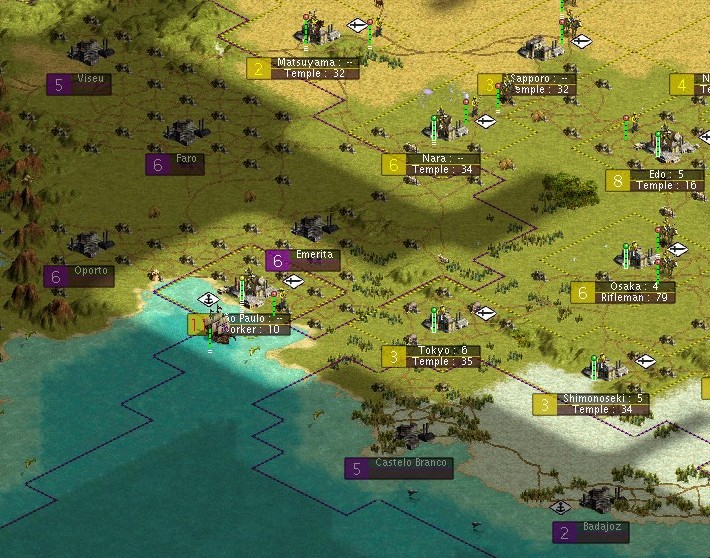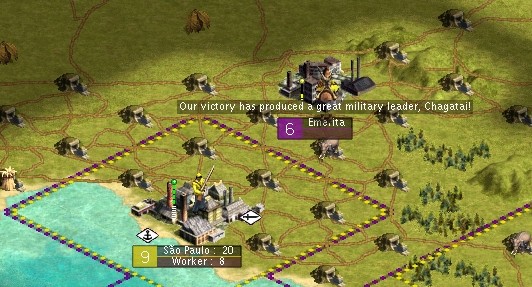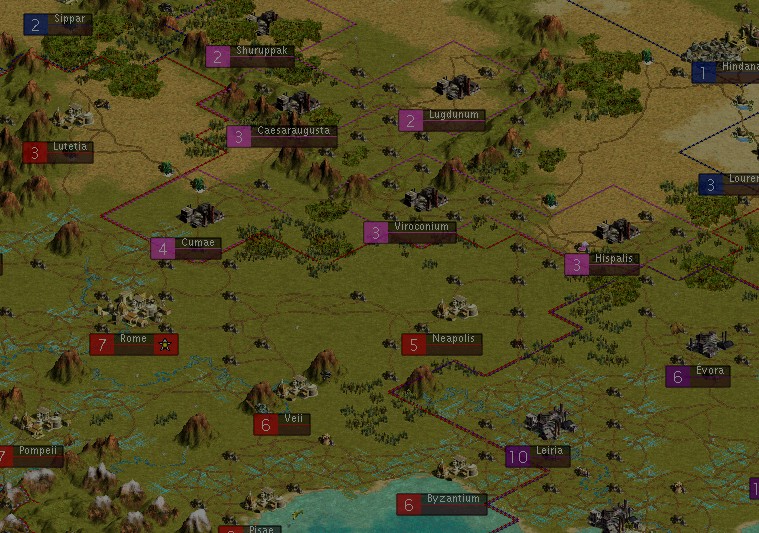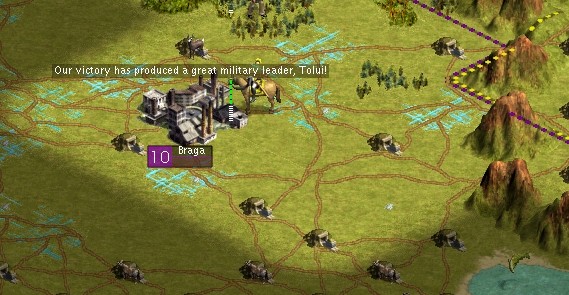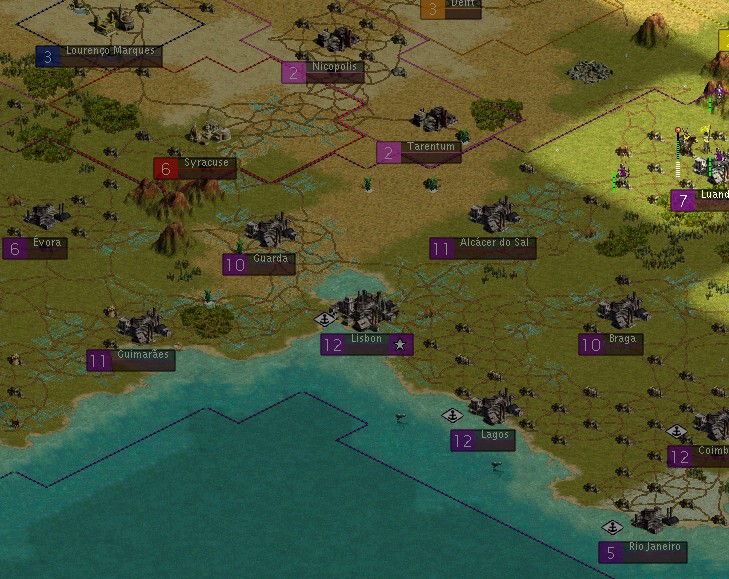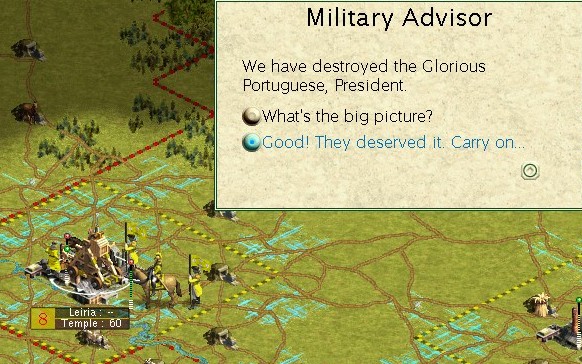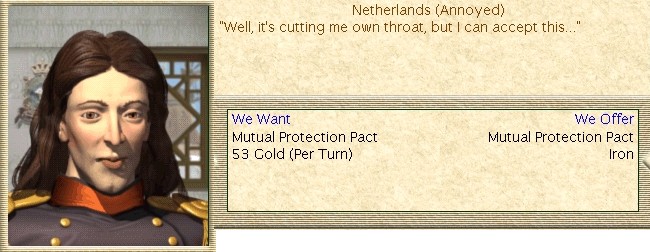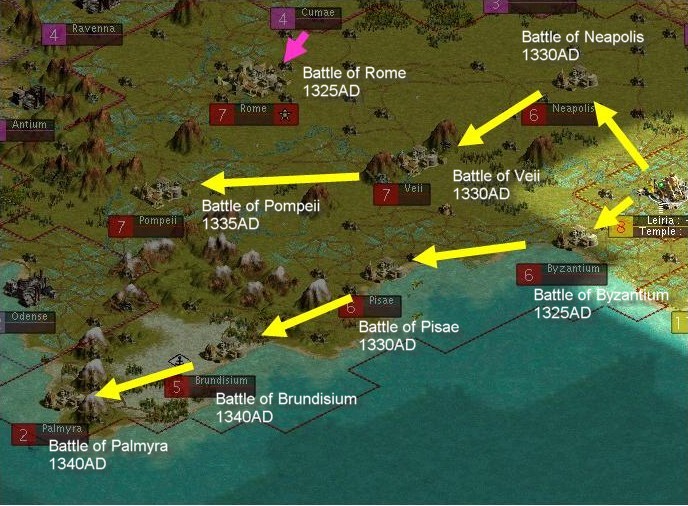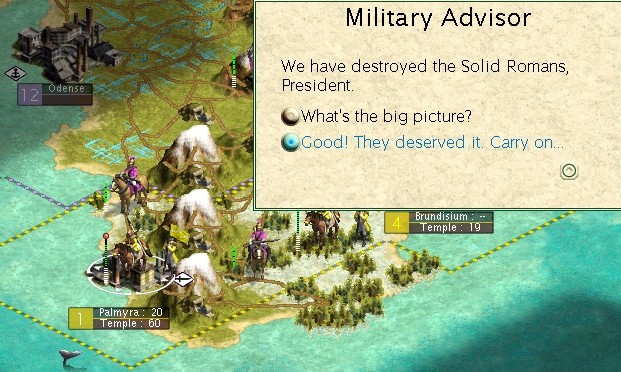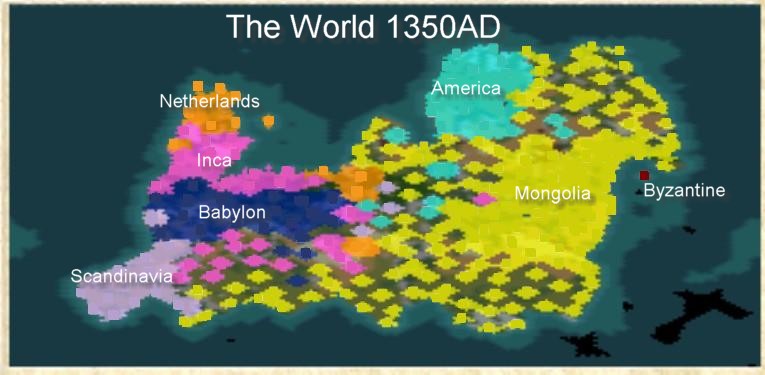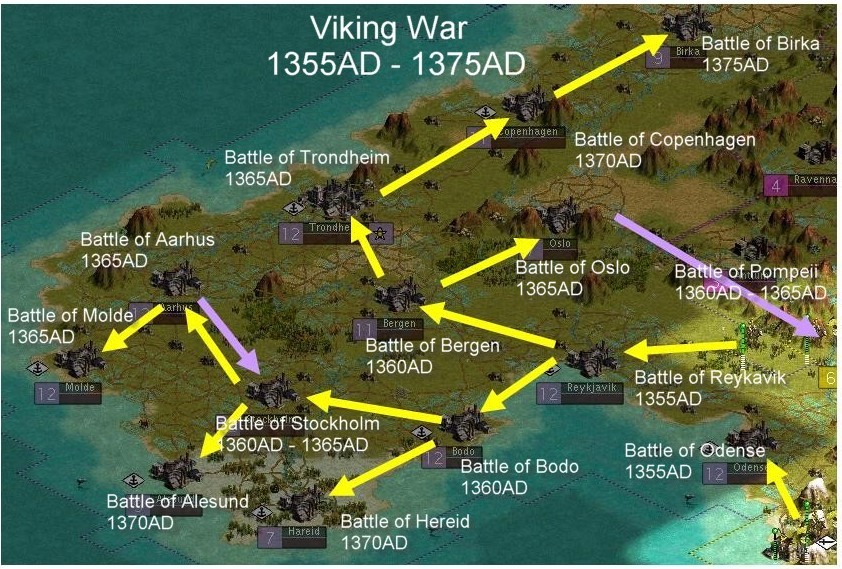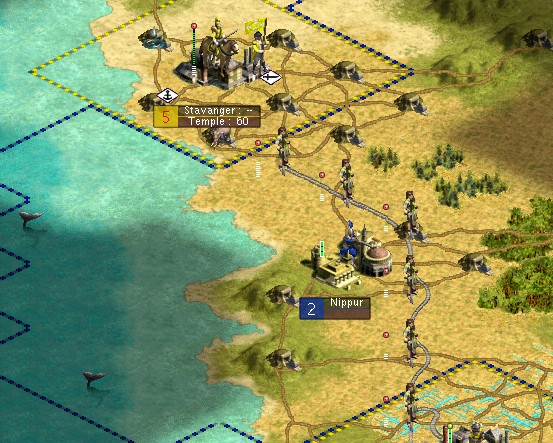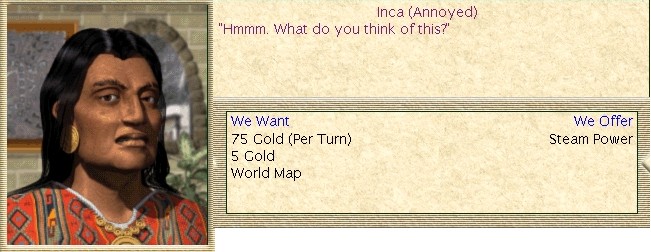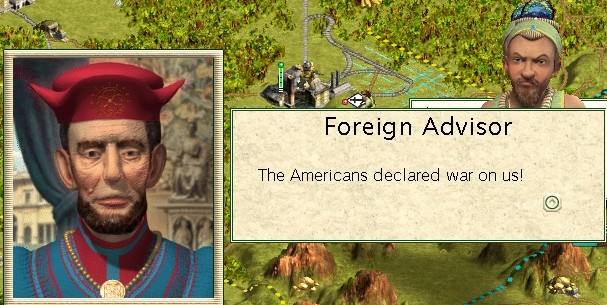Chapter Eighteen – The Viking Incident
The peaceful age of science was not to last long. It was true that Subedei was still interested in pursuing the war against the Americans, and so liberate all the lands east of the Great Dividing Range under Mongol rule. However, with the Dutch locked into an MPP with the Americans, and currently funding the Mongols’ massive investment in technology. This avenue was effectively closed.
With each new territorial acquisition, the core of Mongolia seemed to be safer, but the people in the new territories rapidly adjusted to the Mongolian democratic ways, and in turn became at risk due to the ever extended Mongolian borders, and the ever hostile reception the vast Mongol nation was receiving on the world stage. This situation made the Khan ever more determined to pursue technological superiority in the field of battle at all costs, and so the science machine drove on.
The world seethed with resentment at the seemingly unchallengeable might of the Mongols. But there were ways to bring even the mightiest of foes down a peg, and the Scandinavian commanders decided to pursue just such a plan. The Scandinavians felt threatened by the sudden and rapid expansion of the Mongols westward over the Great Dividing Range. Until recently, this natural formation had been considered the divider between the nations of the east, and the nations of the west. Now one nation had become so dominant that it had massively expanded from its position in the east to extend well into the territory of the west.
It would certainly be foolish to challenge the might of the Mongols directly, but on the other hand, the Scandinavians were not the weaklings that the Portuguese and the Romans had been. The Scandinavian military was well equipped with modern rifle divisions, a defence that could easily blunt the attack of an equivalent number of cavalry divisions. Of course these units were still not as good as the recent infantry divisions that the Mongols were putting into the field of battle, but the Scandinavians still had some confidence in their ability to defend against Mongolian aggression.
Recent advances had brought the concept of an unbadged ship, the privateer. This was considered a low risk way of putting some hurt on the Mongols. It was known that the Mongols were interested in completing a full world map, and so had ships out in the Great Ocean mapping the remaining unknown areas, just in case any further islands should be revealed. This provided the Scandinavians with their opportunity. Two of these privateers, with hidden nationality, set sail on a mission to hunt down and kill any Mongolian ships that they should encounter.
In what became known as the Viking incident, these privateers happened upon two Mongolian vessels in the deep ocean in the late 1340’s AD. They opened fire, sinking a Mongolian vessel, but losing a privateer in the process. The remaining two ships were both severely wounded in the exchange, resulting in the Scandinavians calling it off, and heading to port for needed repairs. Interestingly enough, the Mongols were almost done, so they completed their world mapping exercise first, and then headed for port.
It is not known for sure how the Khan was able to trace this act of piracy back to the Scandinavians. Some have claimed that in the heat of battle, the Mongols heard the distinct sounds of the Viking accent, but most scholars doubt this theory, as the ships remained some distance apart, and the battle was decided solely by cannon fire. The most plausible theory is that the ship was in fact traced back to its port of origin, and seen entering a Scandinavian port. As Mongolian troops were right next to Viking territory at this time, this theory seems reasonable. In any event, international piracy against the Mongols could not go unpunished, and so even though the potentially more difficult rifles would now be faced, there was no prospect of anything but war!
War was declared in 1355AD, and the Mongols were to find that the Scandinavians were quite as well prepared as they had thought they were. Although the Scandinavians possessed rifles, these weapons were relatively new, and so were not that common, with the bulk of their city defenders still armed with the rather weaker musket, weaponry. And, as the Scandinavians were to learn to their peril, the might of the Mongolian armies was still effective, even against fortified rifles!
The ever eager Subedei was given the task of crushing this latest upstart nation. General Ereen was now given the more secondary task of homeland security. Armed with his brilliance as a general, the massively growing Mongolian productive might, and the huge logistical genius of the Mongolian rail network, Subedei set about planning the destruction of these new foes.
Subedei set up his forces by Pompeii and Palmyra. For although, the Mongols had long borders now, the borders with the Vikings were actually quite small, and so it was only from these two cities that he could get reasonable access at the core of the Scandinavians.
The attack on Reykavik went first, and saw the first action of a cavalry army against a mighty rifle division. The sixth cavalry army was to win the day, however, and it was quickly followed up by several cavalry divisions. In the bloody battling that followed, Subedei lost two cavalry divisions to only one musket division, so the first cavalry army entered the fray to smash a second musket division, and finally an elite cavalry division crushed the remaining resistance to claim the first Scandinavian city.
The battle for Odense proved much easier, as in the end only the fifth cavalry army was required to destroy a rifle and a musket division and claim the Mongols second city. Furthermore, Subedei ordered the upgrading of no less than 26 cannons to the much superior artillery unit, and he enhanced the power of the keshik armies by adding a fourth unit, an additional cavalry to the armies.
The Vikings were not going to take this invasion of their territory lying down, however. The war gave them the final incentive to end their pointless conflict with the one island city nation of the Byzantines, and focus on the imminent threat posed by the Mongols. In retaliation, they struck at the invasion force gathering north of the newly conquered Reykavik, inadvertently triggering the mutual protection pact that Yeh –lu had signed with the Dutch. Subedei, of course, had no intention of allowing the Dutch to share in the spoils of this war.
The Viking retaliation resulted in an exchange of cavalry divisions by Reykavik, before Subedei’s forces stormed past these troops on their way to new Viking cities. Meanwhile, the all important strategic rail net was continually rushed to ensure that all new territory quickly joined the net, and that the advantage of rapid rail led all the way to the front lines.
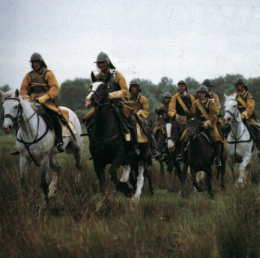
Meanwhile, the Vikings rushed improved weaponry to their frontline troops, but it would do no good. At Bodo the fourth cavalry army smashed through no less than three rifle divisions to single handedly capture the city. At Bergen, the Mongols again encountered muskets. The first cavalry army combined with five cavalry divisions to smash four musket divisions and an outdated berserk division and claim the city, though for the loss of a cavalry division. At Stockholm, the newly up-powered keshik armies went into action against rifle defenders, and this was to be one way traffic as well. Chagatai’s keshik army, the seventh keshik army and the second keshik army each combined to destroy a rifle division, leaving a berserk division to a single cavalry division and another city fell into Mongolian hands.
The Scandinavian high command were absolutely determined not to allow this conflict to be all one way traffic, and in 1360AD, they seized upon the opportunity presented to them in poorly defended Stockholm, and Pompeii. The relatively easy recapture of Stockholm, and capture of undefended Pompeii caused considerable unrest amongst the fickle democratic populace. Wars had become good only when the news remained good. As sson as there was any suggestion that the mighty Mongolian war machine might be fallible a degree of unrest occurred.
The new field orders included a directive form the Khan himself, all frontline cities were to be locked down with the new infantry divisions. There were to be no more mishaps in this war!
The recapture of these two cities was almost routine for Subedei, even though the Scandinavians reinforced the Stockholm with two rifle divisions. Chagatai’s keshik army was ready to roll again, and it disposed of both rifle divisions and a further cavalry division. Pompeii had not been reinforced by the Scandinavians, and so fell to a single keshuk division, Then both cities received infantry division defenders.
Not satisfied with merely reclaiming these cities, Subedei pressed home his offensive against Aarhus, Trondheim, Oslo and Molde. The combination of cavalry armies, keshik armies (all upgraded with a cavalry division) and cavalry divisions accounted for no less than 10 rifle divisions, three musket divisions and a berserk division to capture all four cities for no Mongolian loss, and generate a new leader in the process.
Then, finally, the new artillery was able to be brought into play for the first time. Although not really necessary, the Vikinks had a small force of three cavalry divisions and a berserk division left by Oslo. It was an easy matter for the new artillery to totally diminish the capacity of this force to near irrelevance, in time for cavalry divisions to feast upon the remains.
It took until 1370AD, before Subedei decided he finally had troops to spare to finish off the Viking presence in the east. The Vikings had three isolated cities just west of the Great Dividing Range, but certainly lacking sufficient garrison at the time to be able to launch any significant threat against the Mongols. Hence to this point they had been left alone. Now that they had been reduced to only eight cities, three of which were these eastern cities of Shantung, New Leipzig and Memphis, Subedei decided to clean these cities out.
No armies were used in these assaults, as they were still tied up in the Scandinavian core, so it was left up to cavalry divisions to smash through the Viking defences unaided. The true test of whether the rifle really was sufficient against cavalries was about to begin!
At Shanting, two rifle divisions died for the loss of a single cavalry division. At New Leipzig there was no loss as two rifle divisions were swept aside. At Memphis there was only one rifle division and one musket division and both succumbed to the assault for no Mongolian loss. So the short answer was, no, the rifle could not hold out Mongolian cavalry!
In the Scandinavian core Copenhagen, Alesund and Hareid fell to the army plus cavalry assault. These assaults accounted for a further eleven entrenched defending rifle divisions, whilst attacks on Scandinavian troop movements accounted for a further nine divisions of more obsolete units including pikes, medieval infantry and archers.
In the Khan’s court back in Karakorum, the Sages’ announcement of the discovery of the secrets of Steel was totally overshadowed by Chebe’s military report stating that the once proud Scandinavians had been reduced to just two cities.
As the year 1375AD was heralded in, Subedei struck at the second to last Viking city of Birka. Between the third keshik army and the fith cavalry army three divisions of rifles perished leaving a cavalry division to take out a berserk division and take the city.
 Now, now. This isn't the Celtic peacekeepers.
Now, now. This isn't the Celtic peacekeepers.


